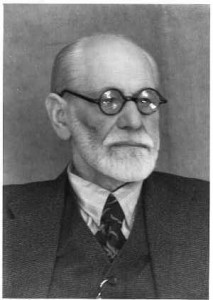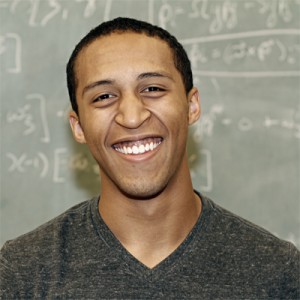This review of Elizabeth Kolbert’s The Sixth Extinction: An Unnatural History appeared in the Washington Post this morning. I know there are many people at Wesleyan searching for ways to make a difference in the face of the environmental disasters of climate change. Kolbert is a thoughtful, engaged and determined guide.
Elizabeth Kolbert’s “Field Notes From a Catastrophe” (2006) presented a powerful account of how climate change was disrupting lives around the planet. Whether the New Yorker columnist was visiting a utility company in Burlington, Vt., ice sheets in Greenland or floating cities in the Netherlands, she deftly blended science and personal experience to warn of the enormous harm created by human-generated climate change. The last chapter of that book, “Man in the Anthropocene,” underscored that we had entered an era in which human beings had begun to change everything about the planet’s interlocking ecosystems, and that we had put much of those systems and our own species at enormous risk.“It may seem impossible,” Kolbert concluded, “to imagine that a technologically advanced society could choose, in essence, to destroy itself, but that is what we are now in the process of doing.”
(Henry Holt) – ‘The Sixth Extinction: An Unnatural History’ by Elizabeth Kolbert
In her new book, “The Sixth Extinction,” she provides a tour de horizon of the Anthropocene Age’s destructive maw, and it is a fascinating and frightening excursion. We humans have been bad news for most of the world’s living things, causing massive extinctions of species with which we share the planet. Unless we change our ways, she argues convincingly, we will certainly cause our own demise.
Until the 18th century, scientists didn’t have a clear idea that species could become extinct. Kolbert credits the French naturalist Georges Cuvier, writing in the wake of the great Revolution, with realizing that whole branches of the tree of life could permanently be cut off. Still, most of those who studied natural history were sure that extinctions happened only gradually over very long periods of time. This uniformitarian view would fit well with Darwin’s perspective on the slow and steady pace of evolutionary change through natural selection. Species did become extinct, but only very slowly as other competitors adapted more successfully to the environment around them.
This view of extinctions was definitively shattered by the work of Luis and Walter Alvarez, a father-son team who demonstrated that the Cretaceous period ended when an asteroid struck the Earth and radically changed the planet’s climate. In what has come to be called the K-T extinction, “every animal larger than a cat seems to have died out,” and things were no better in the water. The dinosaurs were just the most celebrated victims: “Following the K-T extinction,” Kolbert emphasizes, “it took millions of years for life to recover its former level of diversity.”
The scientific consensus was that things evolved very slowly, except in the face of radical events — like an asteroid crashing into the Earth. Today there is another asteroid hitting the planet, and it’s us. Slow “adaptation” in the Darwinian sense is meaningless if a creature very suddenly has to face conditions that “it has never before encountered in its entire evolutionary history.” In our age, the Anthropocene, these are the conditions human beings have been creating (very quickly) for other forms of life.
As in “Field Notes From a Catastrophe,” Kolbert presents powerful cases to bring her point home. Oceans are highly stressed by climate change, for example, and acidification of the seas is driving the extraordinary ecosystems of coral reefs into extinction. Plants and animals are desperate to migrate to more hospitable climes, while others can’t survive the arrival of the newcomers. According to entomologist E.O. Wilson, whom she cites, we are now reducing biological diversity to its lowest level since the Cretaceous period.
Some of these changes have been created by our species breaking down barriers among other species as life forms tag along on our boats and planes from one part of the globe to another. Snakes in Guam, snails in Hawaii and thousands of other species brought by human beings into new environments, intentionally or not, have “succeeded extravagantly at the expense of other species.” As we make the world more interconnected than ever (“The New Pangaea”), the fatal vulnerabilities in thousands of species are exposed. The recent annihilation of bat populations in the Northeast, for example, has been caused by a foreign fungus that the animals had never encountered and so had no defense against. When a new fungus appears, Kolbert writes, “it’s like bringing a gun to a knife fight.”
The alterations initiated by human beings build on one another, accelerating change in ways that make it all but impossible for most species to adapt quickly enough. As the great environmentalist Rachel Carson put it, “Time is the essential ingredient, but in the modern world there is no time.” But Kolbert is not nostalgic: “Though it might be nice to imagine there once was a time when man lived in harmony with nature, it’s not clear that he ever really did.”
Kolbert devotes a chapter, “The Madness Gene,” to considering the attribute of human beings that requires change in order to flourish. Unlike other species, modern humans, endowed with language, seem driven to embark on perpetual improvement projects in the course of which they alter everything around them. “With the capacity to represent the world in signs and symbols comes the capacity to change it, which, as it happens, is also the capacity to destroy it,” she writes. “A tiny set of genetic variations divides us from the Neanderthals, but that has made all the difference.”
Carson, a worthy model for Kolbert, wrote of “the problem of sharing our earth with other creatures.” We are deciding, Kolbert concludes, “which evolutionary pathways will remain open and which will forever be closed.” Our history determines the course of life on the planet. Our species changes the world, and now the most urgent question is whether we can take responsibility for what we do. “The Sixth Extinction” is a bold and at times desperate attempt to awaken us to this responsibility.





![photo[16]](https://roth.blogs.wesleyan.edu/files/2014/02/photo16-300x225.jpg)
![photo[12]](https://roth.blogs.wesleyan.edu/files/2014/02/photo12-300x225.jpg)
